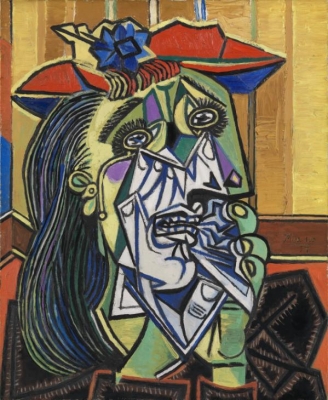
Cubism is an artistic movement, created by Pablo Picasso and Georges Braque, which employs geometric shapes in depictions of human and other forms. Over time, the geometric touches grew so intense that they sometimes overtook the represented forms, creating a more pure level of visual abstraction. Though the movement’s most potent era was in the early 20th Century, the ideas and techniques of Cubism influenced many creative disciplines and continue to inform experimental work.
Picasso attended the School of Fine Arts in Barcelona, where his father taught, at 13 years of age. In 1897, Picasso began his studies at Madrid’s Real Academia de Bellas Artes de San Fernando, which was Spain’s top art academy at the time. Picasso attended only briefly, preferring to roam the art exhibits at the Prado, studying paintings of Rembrandt, El Greco, Francisco Goya, and Diego Veláquez.
During this nascent period of Picasso’s life, he painted portraits, such as his sister Lola’s First Communion. As the 19th century drew to a close, elements of Symbolism and his own interpretation of Modernism began to be apparent in his stylized landscapes.
In 1900, Picasso first went to Paris, the center of the European art scene. He shared lodgings with Max Jacob, a poet and journalist who took the artist under his wing. The two lived in abject poverty, sometimes reduced to burning the artist’s paintings to stay warm.
Before long, Picasso relocated to Madrid and lived there for the first part of 1901. He partnered with his friend Francisco Asis Soler on a literary magazine called “Young Art,” illustrating articles and creating cartoons sympathetic to the poor. By the time the first issue came out, the developing artist had begun to sign his artworks “Picasso,” rather than his customary “Pablo Ruiz y Picasso.”
Picture Credit : Google

